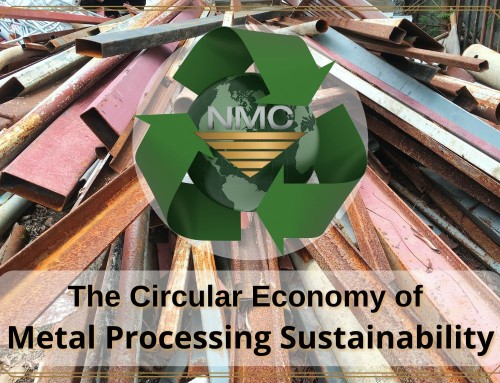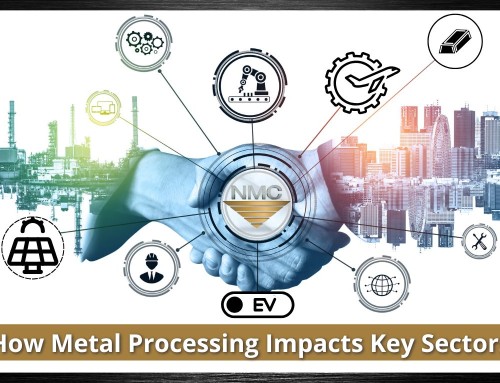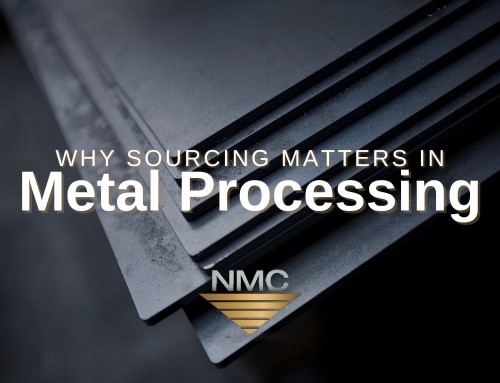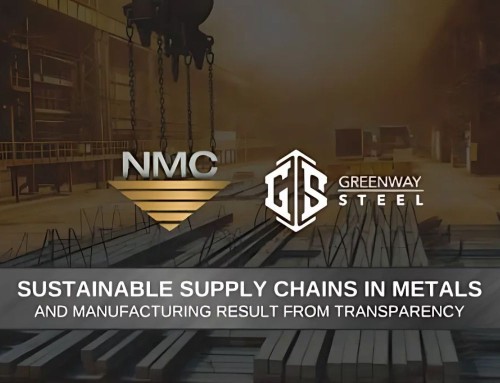Part of an ongoing series on Galvanized Steel

What is Galvanizing?
Galvanizing, or galvanization, is a manufacturing process where a coating of zinc is applied to steel or iron to offer protection and prevent rusting. There are several galvanizing processes available, but the most commonly offered and used method is called hot-dip galvanizing.
Galvanized steel is among the most popular steel types because of its extended durability, having the strength and formability of steel plus the corrosion protection of the zinc-iron coating. The zinc protects the base metal by acting as a barrier to corrosive elements, and the sacrificial nature of the coating results in a long-lasting and high-quality steel product.
This versatility makes it applicable to a variety of projects and industries, including agriculture, solar, automotive, construction, and so on. Below, we aim to provide a comprehensive description of how galvanized steel is processed, different galvanization methods, its benefits, and how it is used in these various industries.
The steps in the galvanizing process are as follows:
- The steel is cleaned in a degreasing solution
- After being cleaned, the steel is pickled by being lowered into a vat of diluted hot sulfuric acid
- The steel is then fluxed in an aqueous solution (typically zinc-ammonium chloride)
- After the flux, the steel is galvanized through immersion in a vat of molten zinc
- Afterward, the steel is inspected for consistency and a complete coating

What are the advantages of galvanized steel?
Many different industries utilize galvanized steel primarily because it has such a wide array of benefits for industries to take advantage of, including having:
Low initial cost compared to most treated steels. In addition, galvanized steel is immediately ready to use when delivered. It does not require additional preparation of the surface, inspections, painting/coatings, etc. sparing companies more costs on their end.
Longer life. With galvanization, a piece of industrial steel is expected to last more than 50 years in average environments, and can last over 20 years with severe water exposure. There is no maintenance required. The increased durability of the steel’s finished product also increases the product’s reliability.
The sacrificial anode ensures that any damaged steel is protected by the surrounding zinc coating. It doesn’t matter if the steel section is completely exposed; the zinc will still corrode first. The coating will corrode preferentially to the steel, creating a sacrificial protection to the areas that are damaged.
Rust resistance from the zinc coating. The iron elements in steel are incredibly prone to rusting, but the addition of zinc acts as a protective buffer between the steel and any moisture or oxygen. Galvanized steel is very protective, including sharp corners and recesses that couldn’t be protected with other coatings, making it resistant to damage.
Different methods of galvanizing
As stated above, there are several different processes for galvanizing steel.
Hot-Dip Galvanizing
The first and foremost method for galvanization is hot-dip galvanizing. The process is very similar to what the name suggests! In this method, steel or iron is dipped in a molten pool of zinc that maintains a temperature of around 860°F (460 °C). This molten bath begins a metallurgical bond between the zinc and the receiving metal. After the metal is pulled from the bath, it reacts to being exposed to the atmosphere, and the pure zinc mixes with oxygen to form zinc oxide. The zinc-oxide further reacts to carbon dioxide and forms zinc carbonate, which makes up the final protective coating on the material. The tell-tale sign of a hot-dipped galvanized material is the presence of a crystalline-like pattern on the surface, sometimes referred to as “spangle.”

The hot-dipped galvanizing method is an economical choice that can be quickly executed on both simple and complex shapes.
The new coated material can be worked and machined in a similar fashion to uncoated materials. Galvanized steel can be used in high-temperature applications up to 392 °F, but use in temperatures exceeding that level will cause the zinc-carbonate layer to peel off.
Galvannealing
Galvannealing is the outcome of combining the annealing and hot-dip galvanizing processes in order to produce a specialized coating on steel. The process of galvanization is performed via hot-dipping and instantaneous annealing, which produces a matte gray finish.
Galvannealed steel is a zinc-iron alloy product, where the base metal is coated by the hot-dip process, then heated to induce alloying between the molten zinc coating and the steel. The resulting finish is a dull matte surface. Galvannealed steel is conducive to welding and the surface is excellent for paint adhesion.
Pre-galvanizing
Also similar to the hot-dip galvanizing method, but performed at the very first stage of production. Pre-galvanizing is a process that involves rolling the sheet metal through a cleaning agent to quickly prime material for galvanizing. Then, the metal is passed through a pool of molten liquid zinc and is immediately recoiled. The primary advantage of this method is that coils of steel sheet can be rapidly galvanized on a large scale with a more unified coating than the traditional hot-dipped method.
Electrogalvanizing
The most unique of these outlined methods, electrogalvanizing does not involve dipping the material in a molten vat of zinc. Instead, an electric current is introduced to an electrolyte solution that is applied to the steel, which reduces positively charged zinc ions to zinc metal – which is then deposited on the positively charged steel. Like pre-galvanizing, this method is typically done at the first stage of production.
Galvanizing advanced high-strength steel
For more information about the galvanization process for advanced high-strength steel, as well as our partner National Galvanizing, please click here.
What industries utilize galvanized steel?
Galvanized metals are used everywhere!
The bodies of cars and many bicycles are made from galvanized metals. Some drinking water pipes are still made from galvanized steel. Cool rolled sheet metal is also frequently galvanized. Nuts, bolts, tools, and wires of all kinds are now galvanized because it is a cheap process, and helps boost the metal’s lifespan!
Galvanized steel, in particular, is often what is used in modern “steel frame” buildings. Galvanized steel is also used to create structures like balconies, verandahs, staircases, ladders, walkways, and more. Galvanized metal is the ideal choice if your project will live outside after it’s done. Fences, roofs, outdoor walkways, these are all great choices for galvanized metal!
- Wind & solar industries – Solar projects must have a continuous workflow once installed and any repairs/maintenance results in disruption to service (a.k.a. revenue loss). This means that hot-dipped galvanized steels are popular in solar projects for their corrosion protection. It is also popular for its ‘environmental’ friendliness because it does not produce emissions and ensures decades without maintenance. For example, it is often utilized in the agriculture industry because the equipment is susceptible to being easily corroded, creating a demand for tougher, more resilient equipment. Hot-dip galvanized steel provides corrosion protection that can often last for decades, even when exposed to the harsh environment of farming.

- Automotive industry – Though only used on luxury models up until the 1980s, the use of zinc-coated bodies for automobiles is now the norm in auto manufacturing. The ‘body-in-white’ of a car makes up about 80% of the body, all using galvanized steel. The rust -resistance of galvanized steel is also a good marketing tool for the automotive industry because it can provide ‘anti-rust warranties’ to customers.
- Construction industry – Whether for residential or commercial, the durability of galvanized steel has made it popular for over a century in the construction industry. It is also selected for construction because of its aesthetics; The ‘shine’ that galvanized steel provides gives it a contemporary feel and is popular in modern architectural designs. Also, it isn’t just used for large structural pieces but things like fencing, gutters, rails, tubing, poles, and much more.
- Telecommunication industry – Phone lines are not an easy maintenance job, they are tall and often difficult to reach. Hot-galvanized steel can be used on phone wiring and equipment boxes which decreases the risk of damage and need for maintenance at all.
Well, there you have it! With our partner Heidtman Steel, National Galvanizing runs a 245,000-square-foot facility, featuring pickling, galvanizing, galvannealing, and slitting, all in one location, convenient to major markets. This combination of capabilities provides our customers with unparalleled responsiveness to meet the ever-changing demands of today’s market.
About National Material L.P. – With more than 3,000 employees from a multinational portfolio of companies, NMLP provides engineered metal products which include aluminum extrusion and stainless steel rolled product companies to automotive, aerospace, construction, defense, electrical, and industrial markets. Request a Quote Online or give us a call (U.S.) 847-806-7200





